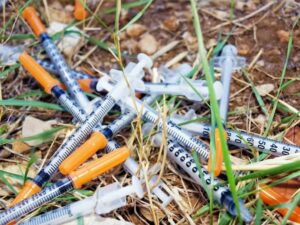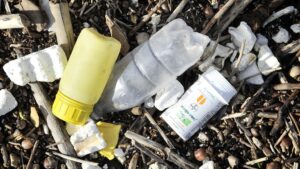Ever wondered about the unseen impacts of the pharmaceutical industry on our environment? From air pollution to waterways – the production, utilization, and disposal of medications generate considerable pollution concerns. In this article, you'll dive deep into the complexities of regulatory challenges and pollution control within the pharmaceutical industry.
We'll explore whether it is safe to flush pills down the toilet, the air and water pollution caused by pharmaceutical operations, and what pollution prevention measures are in place. Brace yourself for a comprehensive journey through the environmental footprint of the pharmaceutical sector.
Is Flushing Pills Down the Toilet Contributing to Environmental Problems?
Flushing unused or expired pills down the toilet might seem like a quick fix, but have you ever pondered its impact on the environment? The truth is, this practice is far from safe and, in many areas, crosses into the territory of being illegal.
 When medications are disposed of in this manner, they bypass the traditional waste treatment processes, potentially releasing harmful substances into our water systems. This poses a significant threat not only to aquatic life but also to the overall quality of the water we come to rely on.
When medications are disposed of in this manner, they bypass the traditional waste treatment processes, potentially releasing harmful substances into our water systems. This poses a significant threat not only to aquatic life but also to the overall quality of the water we come to rely on.
The question then arises: are we contributing to environmental problems with such seemingly harmless actions? The answer is a resounding yes, highlighting the need for awareness and proper disposal methods for pharmaceuticals to safeguard the environment against further pollution.
Understanding Air Pollution from Pharmaceutical Production
The pharmaceutical industry is a major player in the global market, but its operations come at an environmental cost, significantly contributing to air pollution.
This sector emits various pollutants during manufacturing processes, such as volatile organic compounds (VOCs) and particulate matter, leading to a noticeable impact on air quality. Recognizing the gravity of this issue, efforts towards air pollution control for the pharmaceutical industry have intensified.
Techniques such as improving production processes and installing advanced emission control systems are being explored and implemented. These measures aim not just to comply with regulatory standards but also to protect public health and the environment from the adverse effects of air pollution. Awareness and action towards minimizing air pollution caused by pharmaceutical production are crucial steps in maintaining a sustainable balance between health care and environmental stewardship.
The Quest for Pollution Prevention in Pharmaceutical Practices
Pollution prevention in the pharmaceutical industry represents a proactive approach to minimizing environmental impact while maintaining product integrity.
 This quest involves a myriad of strategies, including green chemistry practices, waste reduction techniques, and the adoption of more sustainable manufacturing processes. By rethinking the way pharmaceuticals are developed, produced, and disposed of, the industry can significantly reduce its ecological footprint. Not only does this approach mitigate pollution, but it also aligns with the broader goals of sustainable development and corporate responsibility.
This quest involves a myriad of strategies, including green chemistry practices, waste reduction techniques, and the adoption of more sustainable manufacturing processes. By rethinking the way pharmaceuticals are developed, produced, and disposed of, the industry can significantly reduce its ecological footprint. Not only does this approach mitigate pollution, but it also aligns with the broader goals of sustainable development and corporate responsibility.
Practical initiatives, such as recycling waste solvents and optimizing energy use, demonstrate the industry's commitment to pollution prevention. These measures not only contribute to environmental protection but also offer economic benefits by reducing costs through more efficient resource use.
Pinpointing the Causes of Pharmaceutical Pollution
Identifying the causes of pharmaceutical pollution is key to addressing the environmental challenges posed by the industry.
Sources of pollution are multifaceted, ranging from the production processes to the disposal of unused medications. During manufacturing, harmful chemicals and solvents can be released into the air and water, causing significant ecological harm. Furthermore, when consumers dispose of medications improperly, such as flushing them down the toilet or throwing them in the trash, active pharmaceutical ingredients can leach into water bodies, affecting aquatic life and potentially entering the human food chain.
Another contributing factor is the overprescription of medications, leading to excess waste. Understanding these causes is the first step towards implementing effective solutions to mitigate pharmaceutical pollution and protect the environment.
How Pharmaceutical Companies Are Tackling Environmental Concerns
Pharmaceutical companies are increasingly recognizing their role in environmental stewardship and are implementing various strategies to address pollution concerns.
 Innovations in product design and packaging aim to reduce waste and improve recyclability. Many companies are also investing in cleaner production technologies that minimize emissions and reduce energy consumption. In addition, there's a growing trend towards adopting sustainability practices throughout the supply chain, from sourcing raw materials to distributing finished products.
Innovations in product design and packaging aim to reduce waste and improve recyclability. Many companies are also investing in cleaner production technologies that minimize emissions and reduce energy consumption. In addition, there's a growing trend towards adopting sustainability practices throughout the supply chain, from sourcing raw materials to distributing finished products.
Engaging in environmental impact assessments and participating in global initiatives for pollution control illustrate how the industry is taking responsibility for its environmental footprint. By prioritizing eco-friendly practices, pharmaceutical companies not only comply with regulatory requirements but also contribute positively to global environmental health.
The Pharmaceutical Industry's Water Pollution Campaign: A Watershed Moment?
The pharmaceutical industry's engagement in water pollution campaigns signals a critical shift towards environmental responsibility and sustainable practices.
Recognizing the significant impact of pharmaceutical residues on aquatic ecosystems, the industry is taking steps to mitigate this issue. Initiatives include improving wastewater treatment processes to remove harmful substances before they reach natural water bodies and developing biodegradable pharmaceuticals that pose less risk to the environment. Educational campaigns aimed at healthcare providers and patients encourage the responsible disposal of medications, further reducing the risk of water pollution.
These efforts, combined with collaborative efforts with governments and environmental organizations, mark a watershed moment in managing the pharmaceutical industry's impact on water quality. Through comprehensive strategies and innovative solutions, the industry seeks to safeguard water resources for future generations while ensuring access to essential medications.
